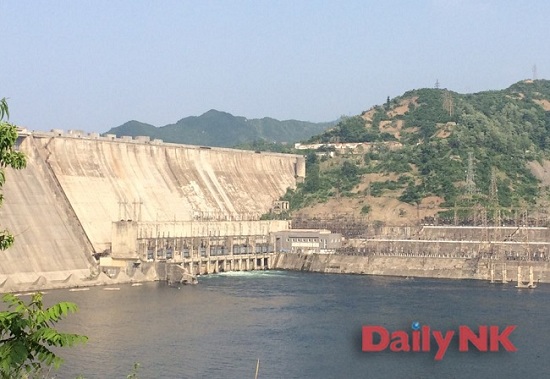
Documented by Daily NK’s special coverage team in May, the above photo shows Sakchu County’s Supung Dam, which sits at the mouth of the Amnok (Yalu) River near the Sino-North Korea border. The establishment of the (North) Korea-China Hydroelectric Company in 1955 led to the construction of Supung Dam, which has remained a joint operation ever since; power output is divided equally between the two countries.
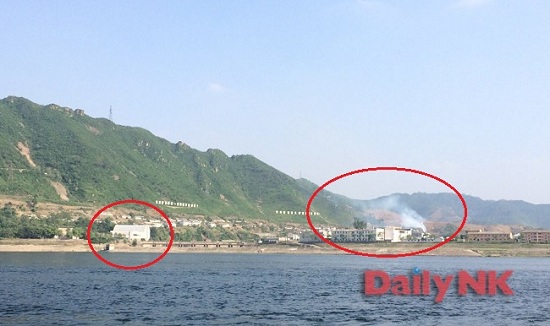
Thick smoke billowing from a factory adjacent to the dam caught our attention. It is not something any of our reporters have witnessed during prior visits to the same region. The building to the left is also new. Our guide, who was Chinese and able to travel to North Korea, informed us it is a newly constructed gymnasium.
Two political slogans are visible at the bottom of the mountain: “Long live Kim Il Sungism and Kim Jongilism.” and “Long live the Great Leader Kim Jong Un.”
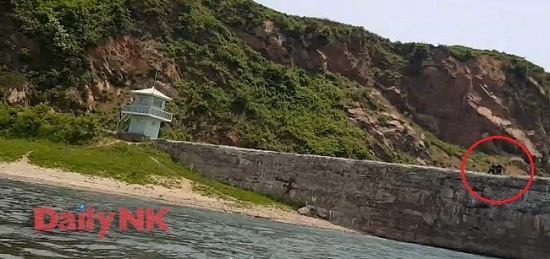
A 40-minute drive from Supung Dam in the direction of Dandong brought us to Kuandian County. The river is very narrow here, giving onlookers a close, unobscured view into Sakchu County, North Korea. Chinese and foreign tourists alike often ride motorboats through this area.
The red circle marks North Korean soldiers on duty near the guard post, which is depicted on the left. Soldiers are fairly accustomed to boatloads of tourists passing by almost daily, so much so that they often wave to the tourists first.
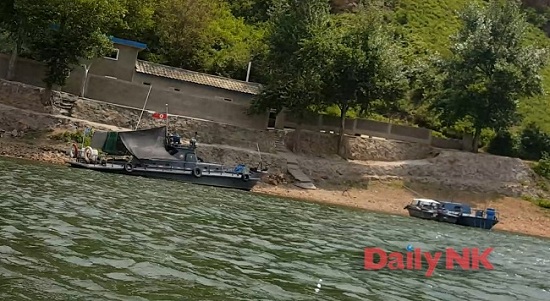
North Korean guard posts were ubiquitous as we floated down the river. At one point we also spotted a North Korean boat [note the national flag in the photo]. Our engine sputtered as we drew nearer to the vessel, prompting the guard, who was on board resting at the time, to lift his head and inspect the situation. He didn’t make much of it, though.
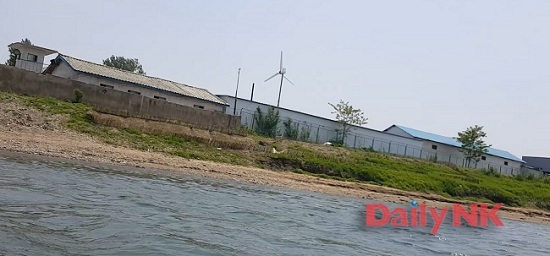
Our guide pointed out the house with the blue roof to the right along the riverbank, telling us that North Korean female soldiers live inside. These guards take shifts manning the post to the left.
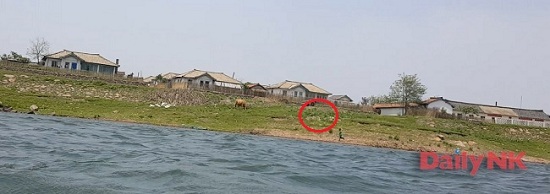
A bit further down from that guard post is a small village. A small child stood along the river enthusiastically returning our waves. But as we got closer he began motioning for us to to turn back. We then noticed the armed North Korean soldier [denoted by the red circle] lurking behind the bushes, and therefore thought it best to keep our distance.

We then made our way to Donggang in Liaoning Province to have a look at a large new piece of infrastructure connecting Dandong with Sinuiju, North Pyongan Province in North Korea. The bridge, funded by China, was to open in 2011 as a replacement for the aging “Sino-Korean Friendship Bridge,” but North Korea has yet to uphold its end of the contract by completing the connecting roads on its side.
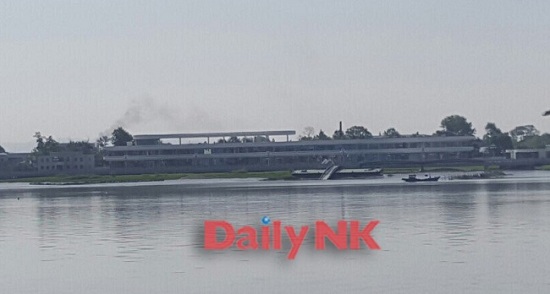
However, a new building has gone up in Sinuiju. According to our guide, the building is a newly constructed visitor center subsidized by the China International Travel Service (CITS). Its main function thus far has been operating boats along the Amnok River for tourists [namely (elite) North Koreans and Chinese].
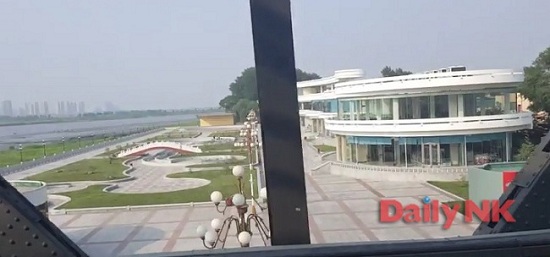
The building is not finalized, however, and tourists numbers have been low as a result. This is also attributed to the fact that North Korean tourists can generally only make the trip during certain [less significant] national holidays.
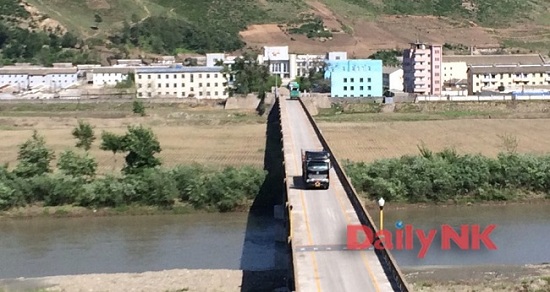
Our vantage point in the Chinese border city Tumen afforded us a clear view of Namyang Customs Office in North Korea. A Chinese cargo truck is pictured returning to China following a presumed drop-off in North Korea. Portraits of Kim Il Sung and Kim Jong Il were unmistakable on the building’s China-facing wall, and with the aid of binoculars we could make out individual North Korean villagers farming.
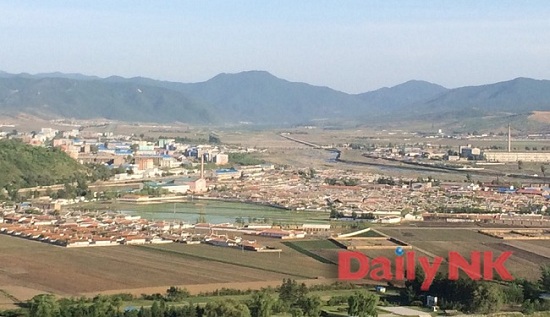
This expansive shot of Hoeryong City was taken from an observatory tower located in Sanhe, Longjing City. The captured image reveals one of the narrowest points along the Tumen River between Chinese and North Korean territory. For this reason the area is widely known as an epicenter for cross-border smuggling and defections.
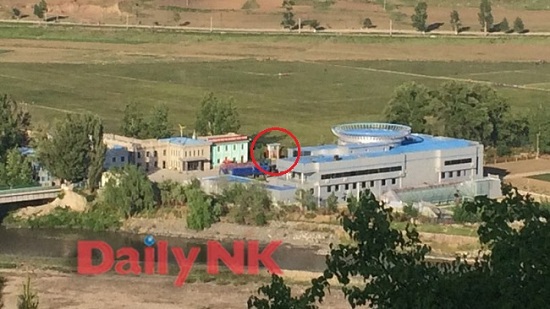
North Korean trucks laden with goods to ferry into China were constantly moving in and out of the Hoeryong Customs Office during our time in the area. The red circle indicates a large mosaic propaganda mural adjacent to the customs building.
The Chinese soldiers on watch around the observatory tower in Sanhe were quite strict. Some units checked our mobile phones, citing a mandate put forth by the North Korean authorities disallowing photo documentation of Hoeryong [by tourists].
*This article has been brought to you thanks to support from the Korea Press Foundation.




















